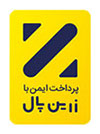Some time ago I wrote a post on what you need to consider when you want bring (back) a family language into your child’s life. I also wrote a piece on motivating your child to use the minority language and become an active bilingual. Many parents have asked me to follow up with some practical ideas on how to tackle the quite often difficult task of getting your child used to another language and how to make it fun. And yes, I will keep it practical – I will not suggest that you get a pet, like I did, and I will keep to tips you can do on your own without necessarily involving other speakers of the language.
The main thing to keep in mind when planning your strategy is that your child should want to speak you language and this want should come from within. Your child should feel motivated to use your language because it gives them a rewarding feeling. The reward can come in the form of having fun, playing a game, generally spending time together, making new friends, reading books, watching movies or cartoons etc. If your child is not motivated or does not feel the need to speak your language, your task will be much harder, so spend some time on coming up with ideas that suit your child. Here are some to start with:
1. Toys which speak the language
Pick a toy that you know your child will like – it might have to be a new one, if old ones already have an established language! It can be anything from a toy train, action figure or doll to a toy animal or cuddly toy, as long as it can have a character and go on an adventure. Give the toy a back story, for example: it was born/made in the country where your language is spoken, lived in a specific city/town/village and its name is a typical one for the language. To make it even more authentic adorn it with a flag or a piece of clothing that represents the language. If you have read my posts before, you know that I am especially fond of hand puppets for this purpose: they are very versatile and can take on a distinct personality of their own. You could also give the hand puppet traits that make it resemble your child – this can make your child want to communicate more with it! Once you have your toy, doll, figure or hand puppet, make up interactive stories that your child will want to participate in, e.g. it can ask your child simple questions about something your child is interested in. Note that the toy should only speak your language and you can jump in and help your child with words needed for the conversation, but only be the translator when it is really necessary. Your child can for example try to guess the meaning of a word and the puppet will express by its reaction if the guess is totally wrong, heading in the right direction or get all excited when the guess is correct.
2. Stories and fairy tales
Read your child’s favourite story or fairy tale in your language. Adjust the level of language complexity based on how much your child already knows of your language. Ideally use lots of pictures to support the story. If you notice that your child does not understand, rephrase what you just said to make it easier. On the other hand, sometimes it might be better to read a completely new story, if the favourite one “must” be read in a specific language. If possible, try to find books that were originally written in your language and which also convey some of the culture in the story.
3. Cartoons and comic books
Many cartoons and comic books have been translated to different languages and this might be an inroad to making your language the means of communication between you and your child. Often you can also find toy figures for the characters and you can use these to extend the stories and make up new adventures. If you can get your child interested in a comic or cartoon which was originally made in your language, all the better!
4. Positive feedback
I strongly believe in positive encouragement. Tell your children how well they are doing and show how happy it makes you to hear them use your language. Be proud of their achievements, no matter how small. Also talk with them about why it makes you happy and proud when they speak your language with you. You know why it is so important to you, but they won’t know unless you tell them.
5. Rewards
You may have heard me say before that you can not bribe your child to speak your language, which is still true, but to get past the first hurdles or an especially difficult phase, I think it is fine to use whatever positive means to support the use of your language. Make the rewards age-appropriate, starting with a simple sticker chart to gaining some privileges and maybe a trip together. You will know best what works for your children. The rewards should always be of real value to your child, which more often than not does not mean material value. When you show your dedication by spending some of your free time or making an extra effort, you are being the positive role model they need to make them also want to speak your language.
Which “tricks” have you used to make your child want to speak your language?

 Persian
Persian  English
English  Arabic
Arabic 


